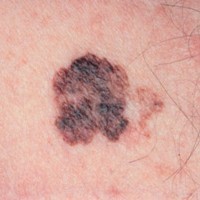When You Should See A Dermatologist To Check Out Your Mole

Moles are something that everyone has in common. While some people have as few as 10 to 40, it is typical to have much more. They can be located anywhere on the body, and usually appear by a person’s 20th birthday. The amount of moles a person has is determined by genetics and sun exposure. Many times puberty and pregnancy will cause new ones to appear or existing ones to darken and do not warrant the attention of a dermatologist.
Types
Moles can be classified as congenital, present at birth, acquired, developed during childhood or early adulthood, or atypical. Atypical moles are shaped irregularly and larger than a pencil eraser. These usually run in families and may put a person at an increased risk of a life-threatening form of skin cancer called malignant melanoma.
Malignant Melanoma Explained
 Malignant melanoma is the most aggressive type of skin cancer and often first develops as a new “ugly duckling” lesion that suddenly appears on the skin. The disease is usually curable, but it can cause mortality, with almost 10,000 Americans expected to die from this disease in 2015. That means one death occurs every hour from melanoma, which is why it is crucial to know the difference between a regular mole and one that is dangerous and should be treated by a dermatologist.
Malignant melanoma is the most aggressive type of skin cancer and often first develops as a new “ugly duckling” lesion that suddenly appears on the skin. The disease is usually curable, but it can cause mortality, with almost 10,000 Americans expected to die from this disease in 2015. That means one death occurs every hour from melanoma, which is why it is crucial to know the difference between a regular mole and one that is dangerous and should be treated by a dermatologist.
Risk Factors
Though anyone can develop skin cancer, those with blue eyes and fair hair and skin are statistically at a higher risk. People who have suffered through serious sunburns, complete with blisters and acute pain, are also at a higher risk of melanoma. However, the most dangerous risk factor is family history. If a close family member has a history of melanoma, a person’s chances of developing melanoma greatly increase.
Self-checking
Dr. Harvey and staff will recommend that his or her patients do self-checks of their skin each month. It should go without saying that it is also a bad sign if a mole is tender, reddens, itches, crusts, scales or bleeds. But sometimes it is not that easy to tell if there is an issue. Many times, we will tell patients to follow the “ABCDE theory” when checking their moles. Here is how the theory works:
A for asymmetry: if both sides do not match, that could be trouble
B for borders: they should not be irregular or uneven
C for color: they should not be more than one or have uneven coloring
D for diameter: they should not be greater than six millimeters in diameter
E for evolution: any change in size, shape or color could be bad
If someone has more than 50 moles, it can be a good idea for him or her to take photos of his or her skin for comparison purposes. It will be difficult to remember what each one looks like over time.
Most of the time, moles do not pose a threat, but if someone has one that meets any of the above criteria, he or she should contact a dermatologist immediately for an appointment. It may be nothing, but if it is cancerous, early treatment can mean the difference between life and death.


